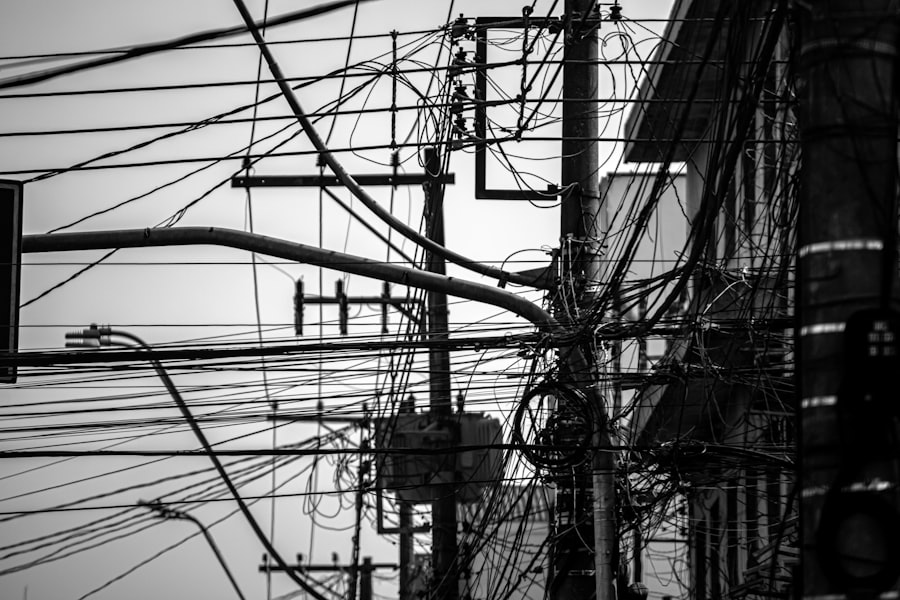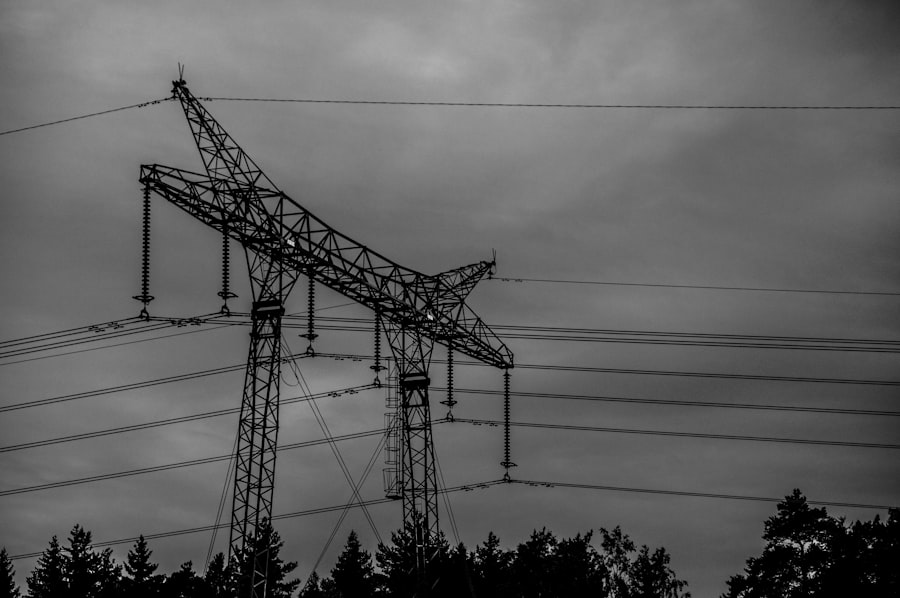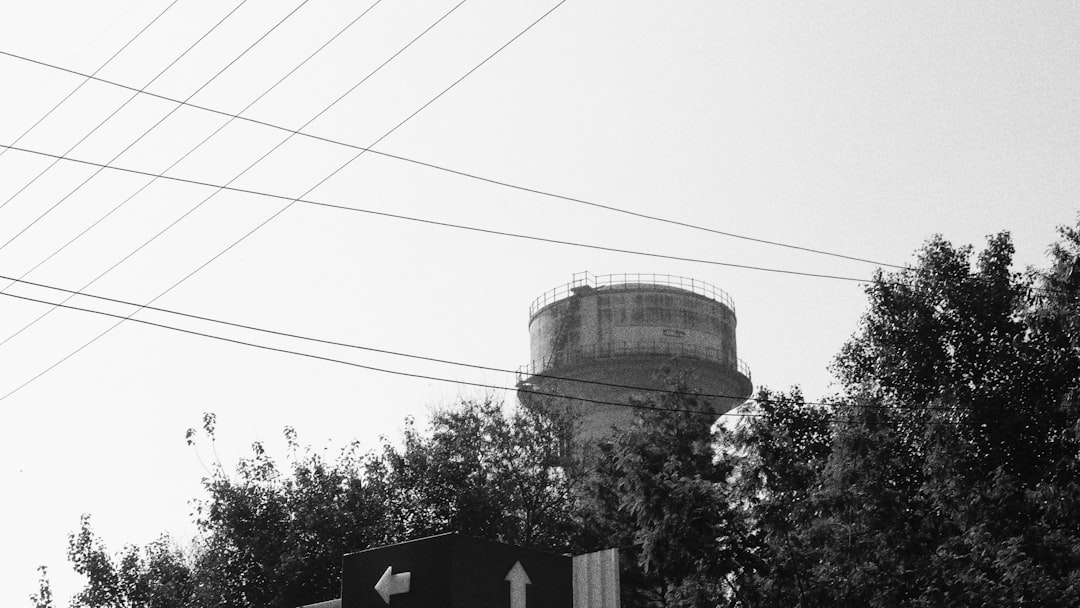Aging infrastructure poses a significant challenge to urban environments, particularly in densely populated cities like New York City. Over the years, the wear and tear on essential systems such as water supply, electricity, and transportation has become increasingly evident.
The impact of this aging infrastructure extends beyond mere inconvenience; it affects the quality of life for residents, hampers economic growth, and poses serious risks to public safety. Moreover, the consequences of neglecting infrastructure maintenance can be dire. As systems age, they become more susceptible to failures that can lead to catastrophic events, such as water main breaks or electrical fires.
These incidents not only disrupt daily life but also strain emergency services and create a ripple effect that can hinder local businesses and community services. The urgency to address these issues is underscored by the fact that many of the city’s infrastructure components are reaching the end of their intended lifespan, necessitating immediate attention and investment.
Key Takeaways
- Aging infrastructure has a significant impact on the reliability and safety of utility systems.
- Utility failures are becoming more frequent, posing a growing risk to public safety and economic stability.
- The economic cost of utility failures in NYC is substantial, impacting businesses, residents, and the city’s overall productivity.
- Aging infrastructure has environmental consequences, including water and air pollution, and contributes to climate change.
- Public safety is at risk due to utility failures, highlighting the urgent need for infrastructure upgrades and maintenance.
The Increasing Frequency of Utility Failures
In recent years, New York City has witnessed an alarming increase in the frequency of utility failures. These failures manifest in various forms, including power outages, water main breaks, and gas leaks, each presenting unique challenges for residents and city officials alike. The rise in these incidents can be attributed to a combination of factors, including the aging infrastructure, increased demand for services, and the effects of climate change.
As the population continues to grow and extreme weather events become more common, the strain on utility systems intensifies, leading to more frequent breakdowns. The consequences of these utility failures are far-reaching. For residents, power outages can disrupt daily routines, hinder productivity, and even pose health risks for those reliant on medical equipment.
Water main breaks can lead to property damage and costly repairs for homeowners and businesses alike. Furthermore, the increasing frequency of these failures raises concerns about the overall reliability of essential services in a city that prides itself on its resilience. As utility failures become more commonplace, the need for comprehensive solutions becomes increasingly urgent.
The Economic Cost of Utility Failures in NYC

The economic ramifications of utility failures in New York City are profound and multifaceted. Each incident not only incurs immediate costs related to repairs and emergency responses but also has long-term implications for businesses and residents. For instance, when a power outage occurs, businesses may lose revenue due to halted operations, while residents may face increased costs associated with food spoilage or alternative accommodations.
The cumulative effect of these disruptions can lead to a significant economic burden on the city as a whole. Additionally, the costs associated with repairing aging infrastructure are often substantial. City officials must allocate funds for emergency repairs while also planning for long-term upgrades and replacements.
This financial strain can divert resources from other critical areas such as education or public safety. Furthermore, the perception of an unreliable utility system can deter potential investors and businesses from establishing themselves in the city, ultimately stunting economic growth and development.
The Environmental Consequences of Aging Infrastructure
| Environmental Consequences | Impact |
|---|---|
| Increased Energy Consumption | Old infrastructure requires more energy to operate efficiently |
| Greenhouse Gas Emissions | Old infrastructure contributes to higher emissions due to inefficiencies |
| Water Pollution | Leaking pipes and outdated sewage systems can lead to water contamination |
| Habitat Destruction | Infrastructure projects can disrupt natural habitats and ecosystems |
The environmental consequences of aging infrastructure are becoming increasingly apparent as cities grapple with the effects of climate change. In New York City, outdated water systems can lead to significant water loss through leaks and inefficiencies, contributing to wastefulness in a time when conservation is paramount. Additionally, aging sewer systems often struggle to handle heavy rainfall events, resulting in combined sewer overflows that discharge untreated sewage into local waterways.
This not only poses a threat to aquatic ecosystems but also compromises public health. Moreover, the reliance on fossil fuels for energy generation exacerbates environmental issues associated with aging infrastructure. As power plants age and fail to meet modern efficiency standards, they contribute to higher greenhouse gas emissions and air pollution.
The need for sustainable solutions is clear; investing in renewable energy sources and modernizing energy grids can mitigate these environmental impacts while also enhancing the resilience of urban infrastructure.
The Public Safety Risks Associated with Utility Failures
Utility failures pose significant public safety risks that cannot be overlooked. When essential services such as electricity or water are disrupted, the potential for accidents and emergencies increases dramatically. For example, power outages can lead to traffic accidents due to non-functioning traffic signals or compromised street lighting.
Similarly, water main breaks can create hazardous conditions on roadways or lead to flooding in residential areas.
Vulnerable populations, including the elderly and those with disabilities, may be disproportionately affected by service disruptions.
The inability to access clean water or reliable electricity can exacerbate existing health issues and create new challenges for those already facing difficulties. Addressing these public safety risks requires a proactive approach to infrastructure maintenance and investment.
The Challenges of Updating NYC’s Aging Infrastructure

Updating New York City’s aging infrastructure presents a complex set of challenges that require careful consideration and planning. One major hurdle is the sheer scale of the task; with thousands of miles of roads, bridges, and utility lines to maintain, prioritizing projects can be daunting. Additionally, many infrastructure components are buried underground or integrated into existing urban landscapes, making them difficult to access without significant disruption to daily life.
Funding is another critical challenge in this endeavor. While there is widespread recognition of the need for infrastructure upgrades, securing adequate financial resources remains a contentious issue. Competing budgetary priorities often leave infrastructure projects underfunded or delayed.
Furthermore, navigating the regulatory landscape can complicate efforts to implement necessary changes quickly and efficiently. As city officials work to address these challenges, collaboration among stakeholders will be essential for developing effective solutions.
The Role of Government and Regulatory Agencies in Addressing Utility Failures
Government and regulatory agencies play a pivotal role in addressing utility failures and ensuring the reliability of essential services in New York City. These entities are responsible for setting standards for infrastructure maintenance and overseeing compliance among utility providers. By establishing clear guidelines and expectations, they can help mitigate risks associated with aging systems and promote accountability among service providers.
Moreover, government agencies are tasked with allocating funding for infrastructure projects and prioritizing investments based on community needs. This requires a comprehensive understanding of existing conditions and potential vulnerabilities within the utility systems. By leveraging data-driven approaches and engaging with community stakeholders, government officials can make informed decisions that enhance the resilience of urban infrastructure while addressing pressing public concerns.
The Importance of Public-Private Partnerships in Infrastructure Maintenance
Public-private partnerships (PPPs) have emerged as a vital strategy for addressing the challenges associated with aging infrastructure in New York City. By collaborating with private entities, government agencies can leverage additional resources and expertise to implement necessary upgrades more efficiently. These partnerships allow for innovative financing solutions that can alleviate some of the financial burdens associated with large-scale infrastructure projects.
Furthermore, PPPs can foster greater accountability among service providers by establishing performance-based contracts that incentivize efficiency and reliability. When private companies are held accountable for meeting specific standards, they are more likely to invest in modern technologies and practices that enhance service delivery. This collaborative approach not only benefits the city’s infrastructure but also promotes economic growth by creating jobs and stimulating local economies.
The Need for Innovative Solutions to Address Aging Infrastructure
As New York City grapples with its aging infrastructure challenges, there is an urgent need for innovative solutions that go beyond traditional repair methods. Embracing new technologies such as smart sensors and data analytics can provide valuable insights into system performance and help identify potential issues before they escalate into failures. By harnessing these advancements, city officials can make more informed decisions regarding maintenance schedules and resource allocation.
Additionally, exploring alternative materials and construction techniques can enhance the durability and longevity of infrastructure components. For instance, using advanced composite materials in road construction may reduce wear over time while also minimizing environmental impacts. By fostering a culture of innovation within the public sector and encouraging collaboration with research institutions and private companies, New York City can develop forward-thinking strategies that address its aging infrastructure effectively.
The Long-Term Benefits of Investing in Infrastructure Upgrades
Investing in infrastructure upgrades offers numerous long-term benefits that extend far beyond immediate repairs. Enhanced infrastructure not only improves service reliability but also contributes to economic growth by attracting businesses and fostering job creation. A modernized utility system can support increased demand while minimizing disruptions caused by failures or inefficiencies.
Moreover, upgrading infrastructure can lead to improved public health outcomes by ensuring access to clean water and reliable energy sources. As cities face growing environmental challenges, investing in sustainable infrastructure solutions can help mitigate climate change impacts while promoting resilience within communities. Ultimately, prioritizing infrastructure upgrades is an investment in the future well-being of New York City’s residents.
The Role of Public Awareness and Advocacy in Addressing Utility Failures
Public awareness and advocacy play crucial roles in addressing utility failures and promoting necessary changes within New York City’s infrastructure landscape. Engaging residents in discussions about their experiences with utility services can provide valuable insights into areas needing improvement while fostering a sense of community ownership over local issues. Advocacy groups can amplify these voices by raising awareness about the importance of investing in infrastructure upgrades and holding decision-makers accountable.
Furthermore, public awareness campaigns can educate residents about their rights as consumers of utility services while encouraging them to report issues promptly when they arise. By fostering a culture of vigilance among residents, cities can create a more responsive system that prioritizes reliability and accountability. Ultimately, empowering citizens through education and advocacy is essential for driving meaningful change within New York City’s aging infrastructure systems.
In recent years, New York City has faced several utility failures that have significantly impacted its residents and infrastructure. These incidents highlight the city’s ongoing challenges in maintaining and upgrading its aging utility systems. For a deeper understanding of the complexities and potential solutions to these issues, you can explore a related article on the topic by visiting this page. This article provides insights into the causes of utility failures and discusses strategies for improving the resilience of urban utility networks.
WATCH THIS! The Real Cost of NYC Living: Your Wallet, Sanity, and Subway Survival Skills
FAQs
What are the common causes of utility failures in NYC?
Utility failures in NYC can be caused by a variety of factors, including aging infrastructure, extreme weather events, construction accidents, and equipment malfunctions.
Which utilities are most commonly affected by failures in NYC?
The most commonly affected utilities in NYC include electricity, water, and gas. These failures can result in power outages, water main breaks, and gas leaks.
How does the city respond to utility failures?
The city of NYC has emergency response teams in place to address utility failures. These teams work to quickly identify and repair the source of the failure, as well as to ensure the safety and well-being of residents and businesses in the affected area.
What can residents and businesses do to prepare for utility failures?
Residents and businesses can prepare for utility failures by having emergency supplies on hand, such as flashlights, batteries, and bottled water. It is also important to have a plan in place for how to safely evacuate or shelter in place during a utility failure.
How can residents and businesses report utility failures in NYC?
Residents and businesses can report utility failures in NYC by contacting the appropriate utility provider or by calling 311 to reach the city’s non-emergency services line. It is important to report any suspected utility failures promptly to ensure a swift response from the city’s emergency teams.
